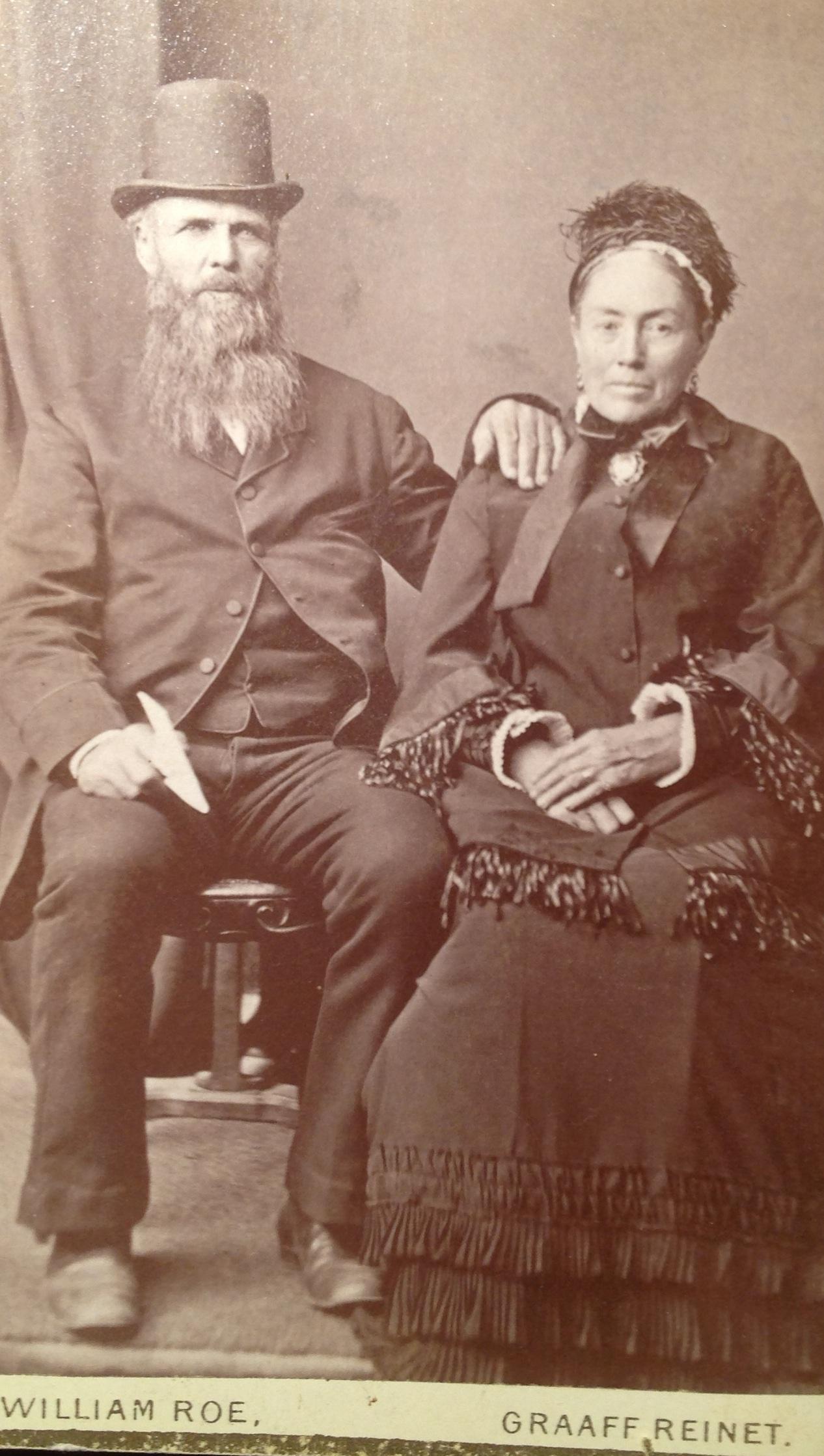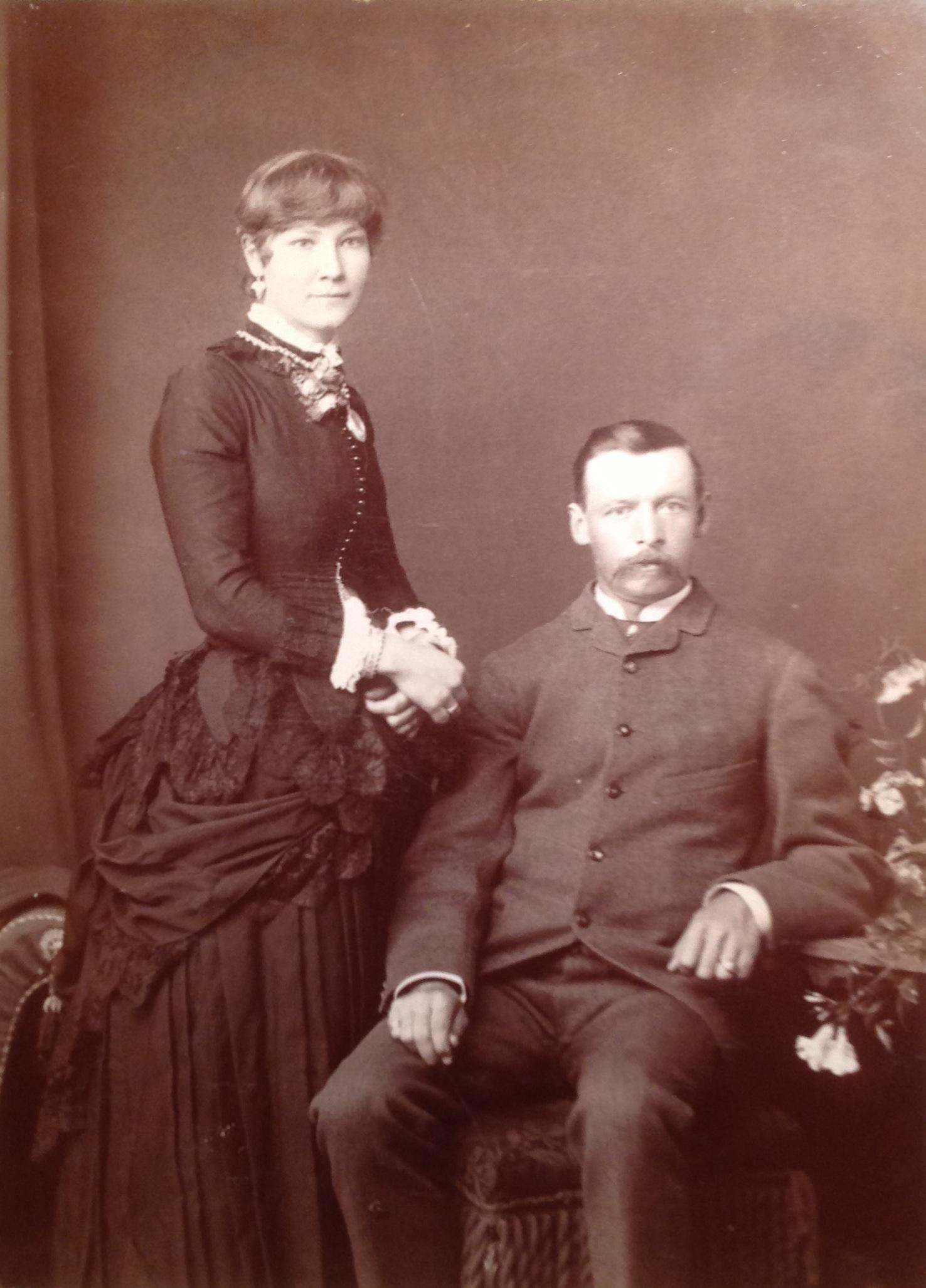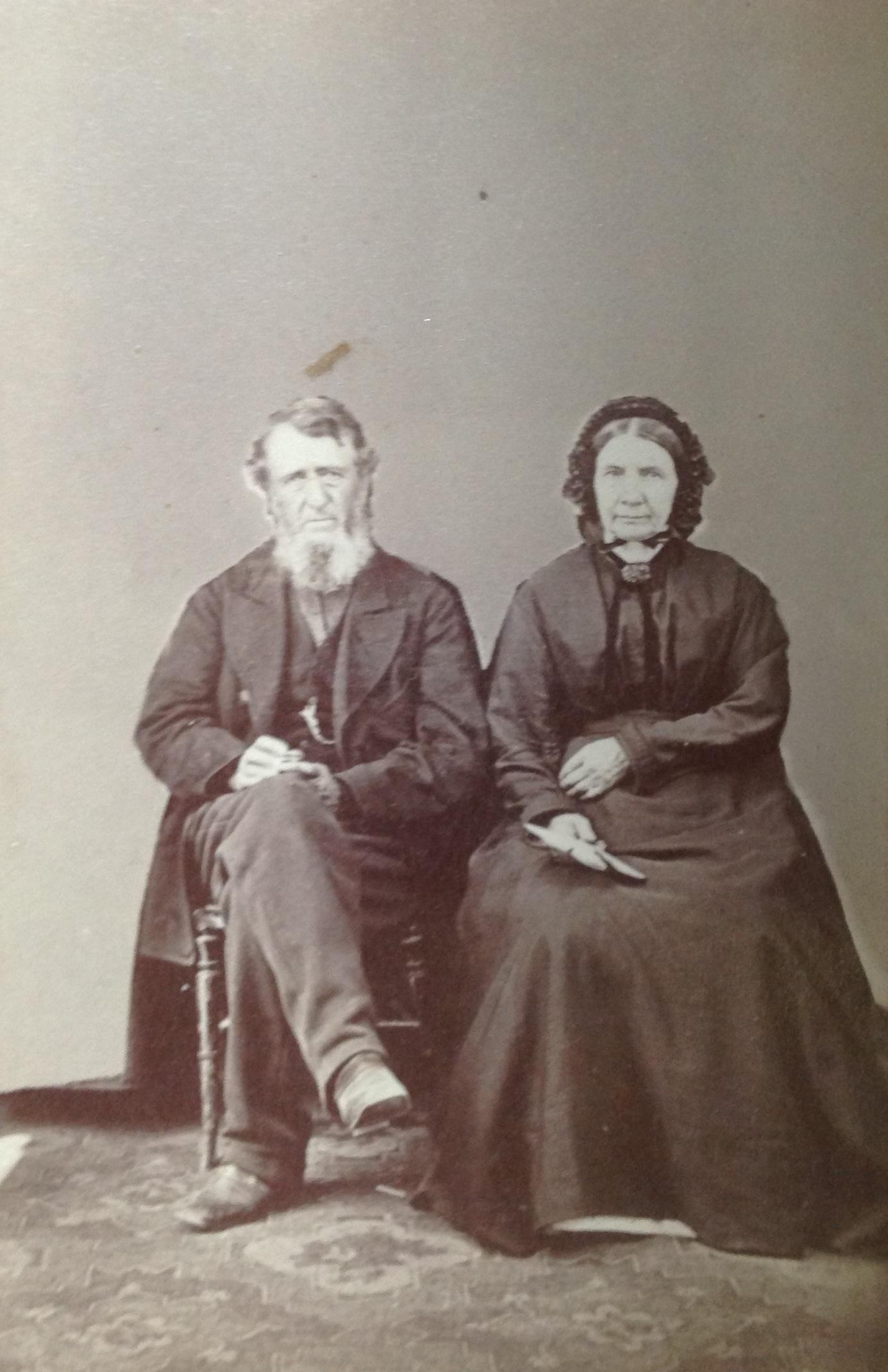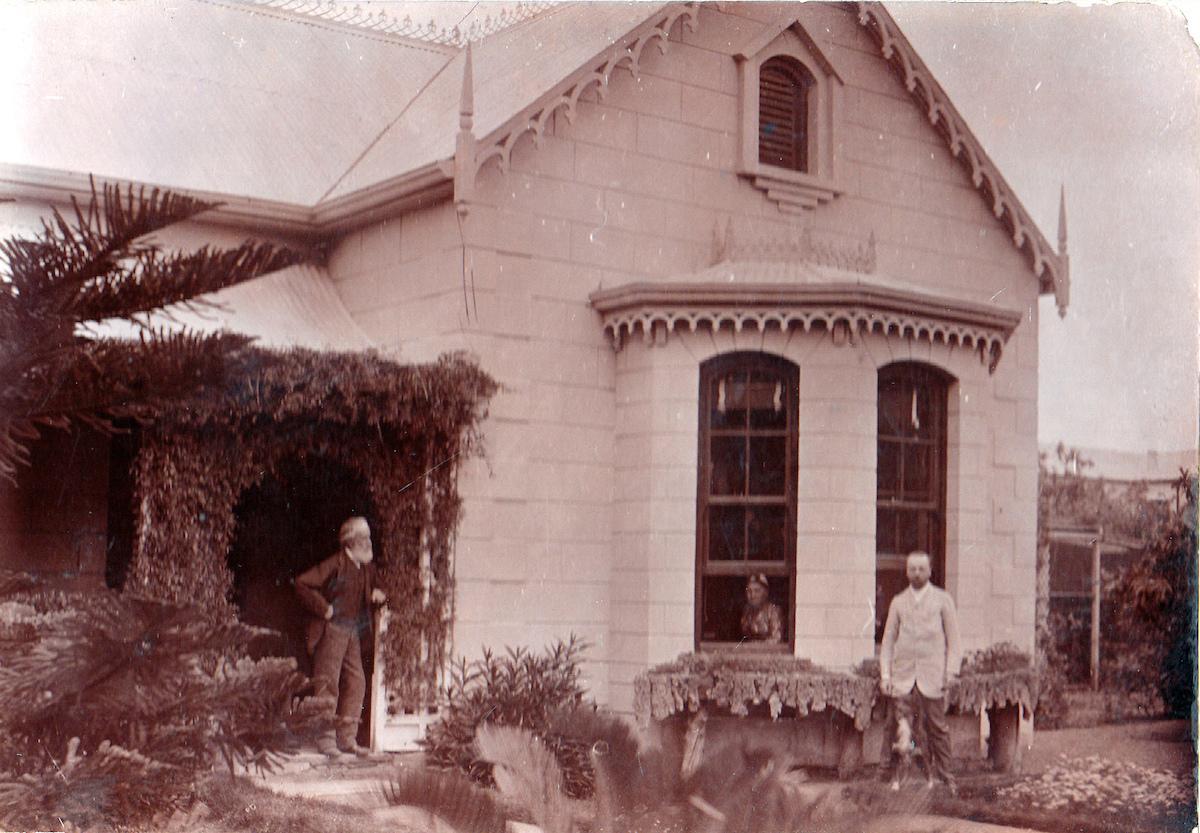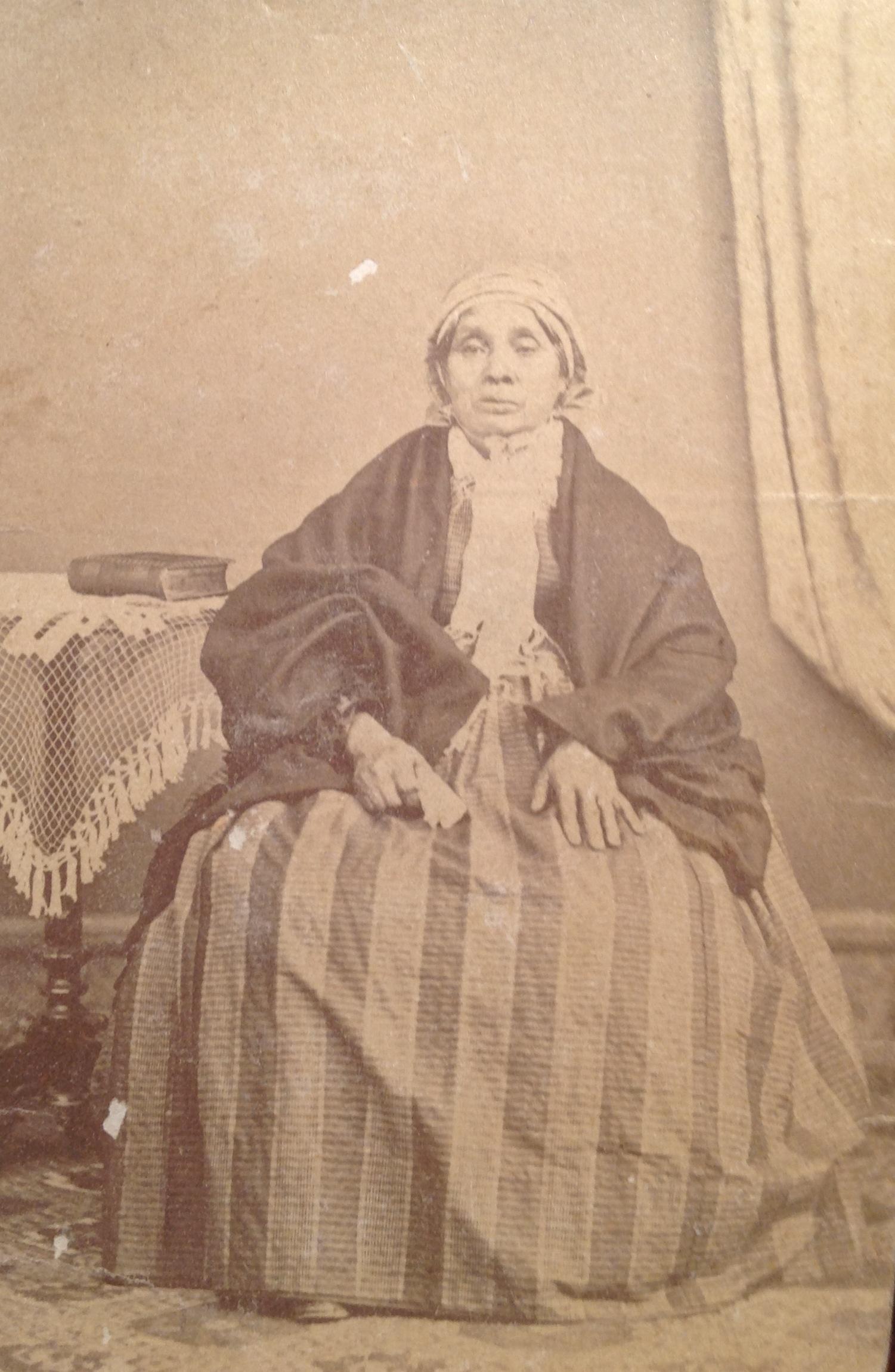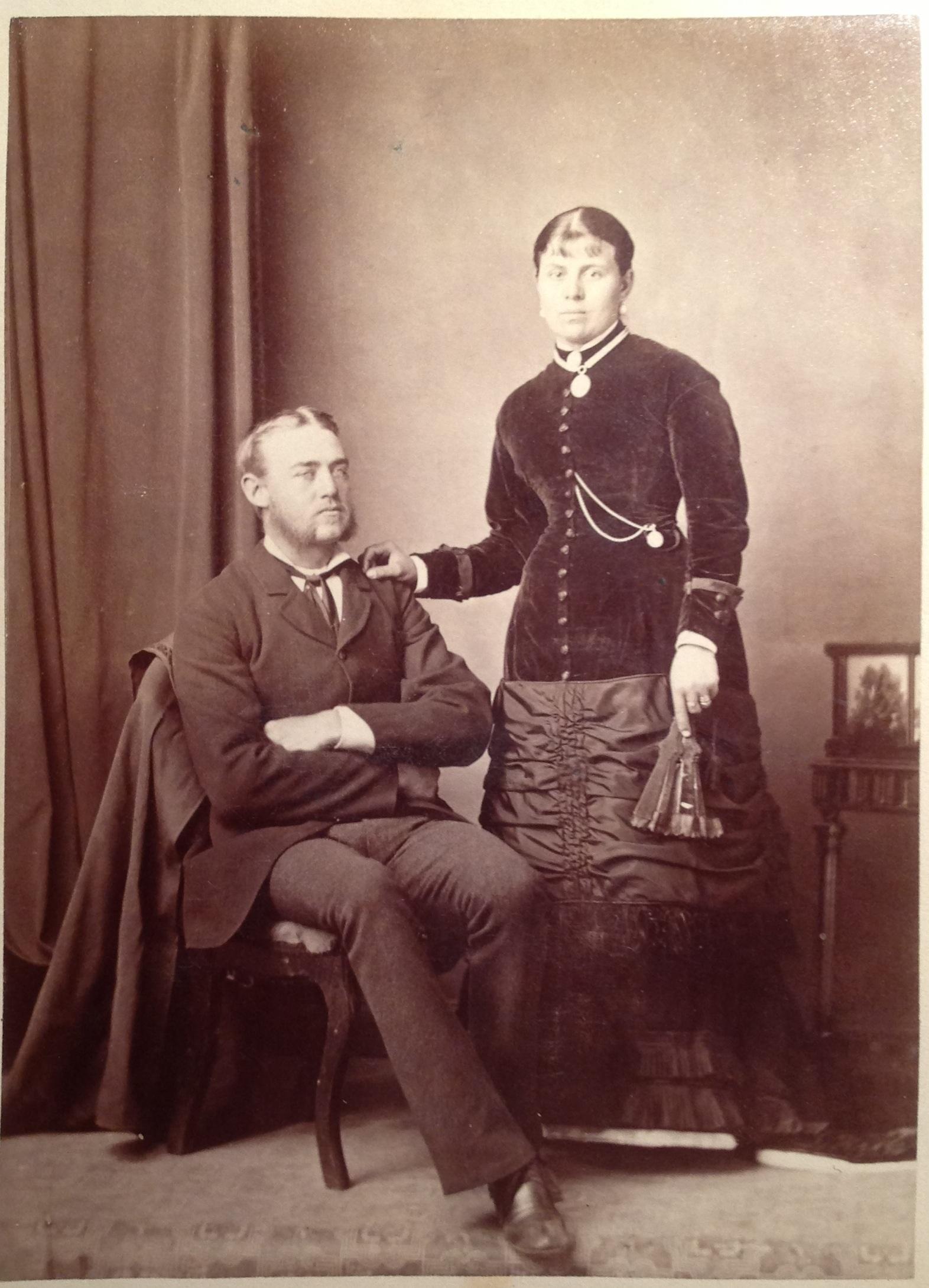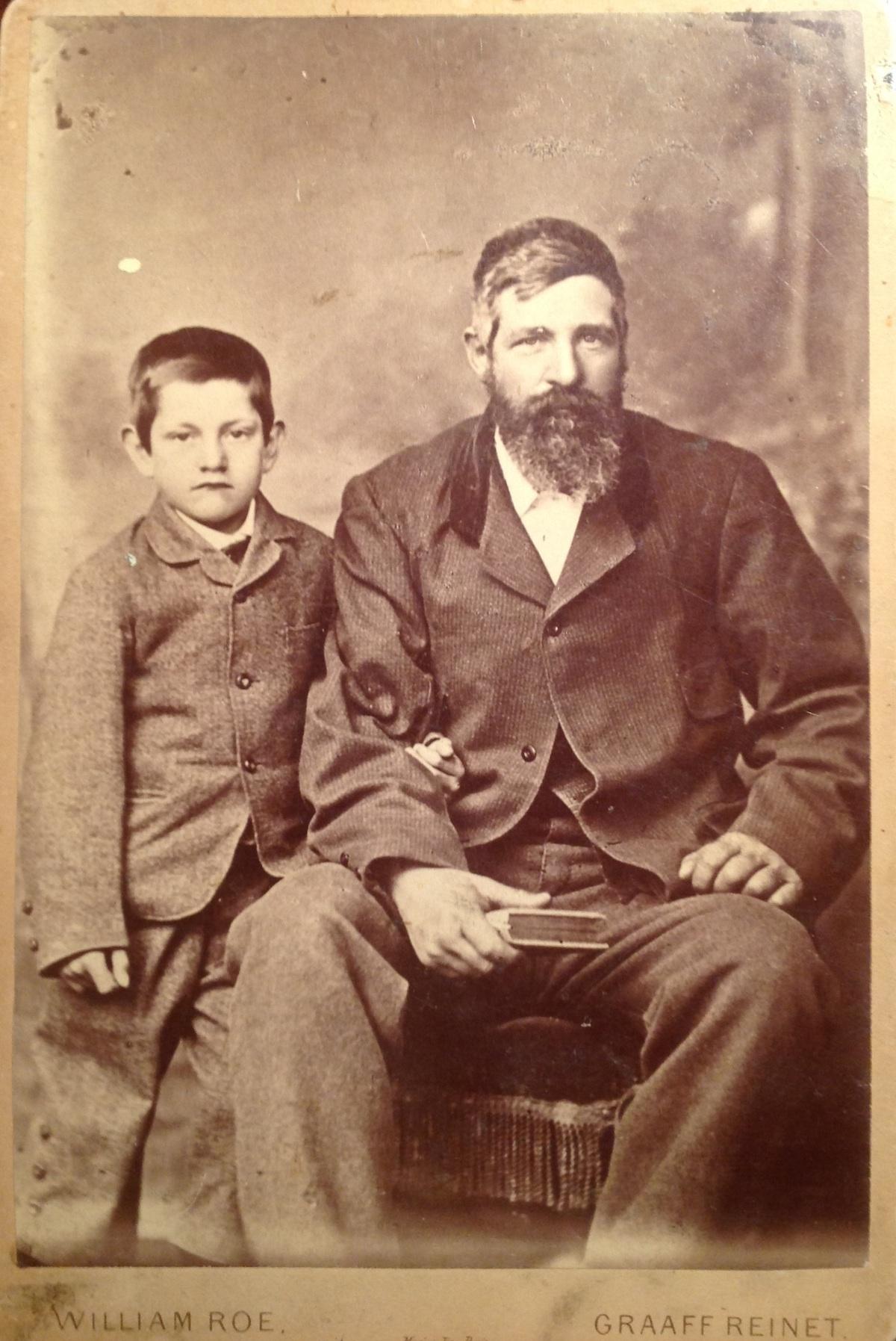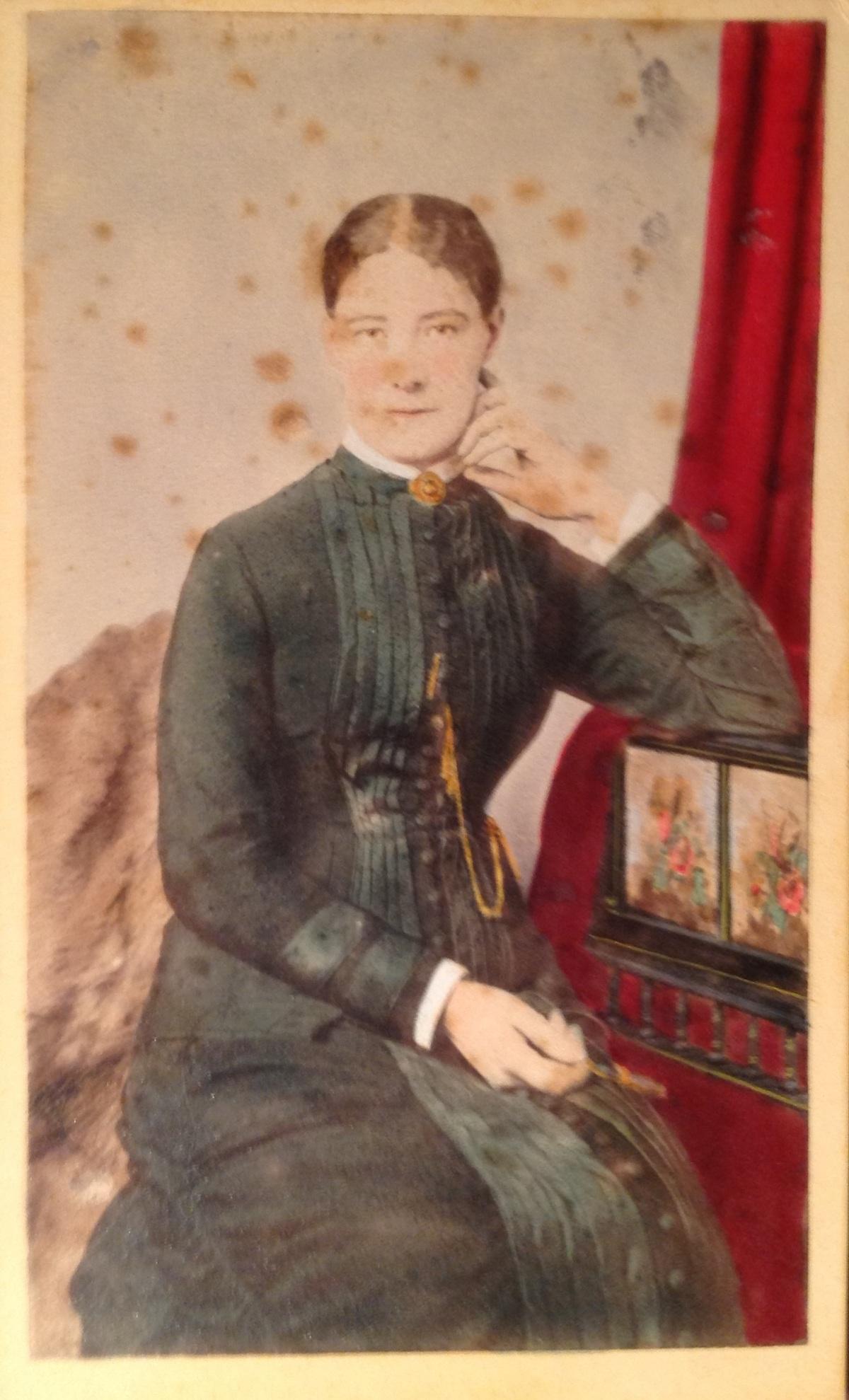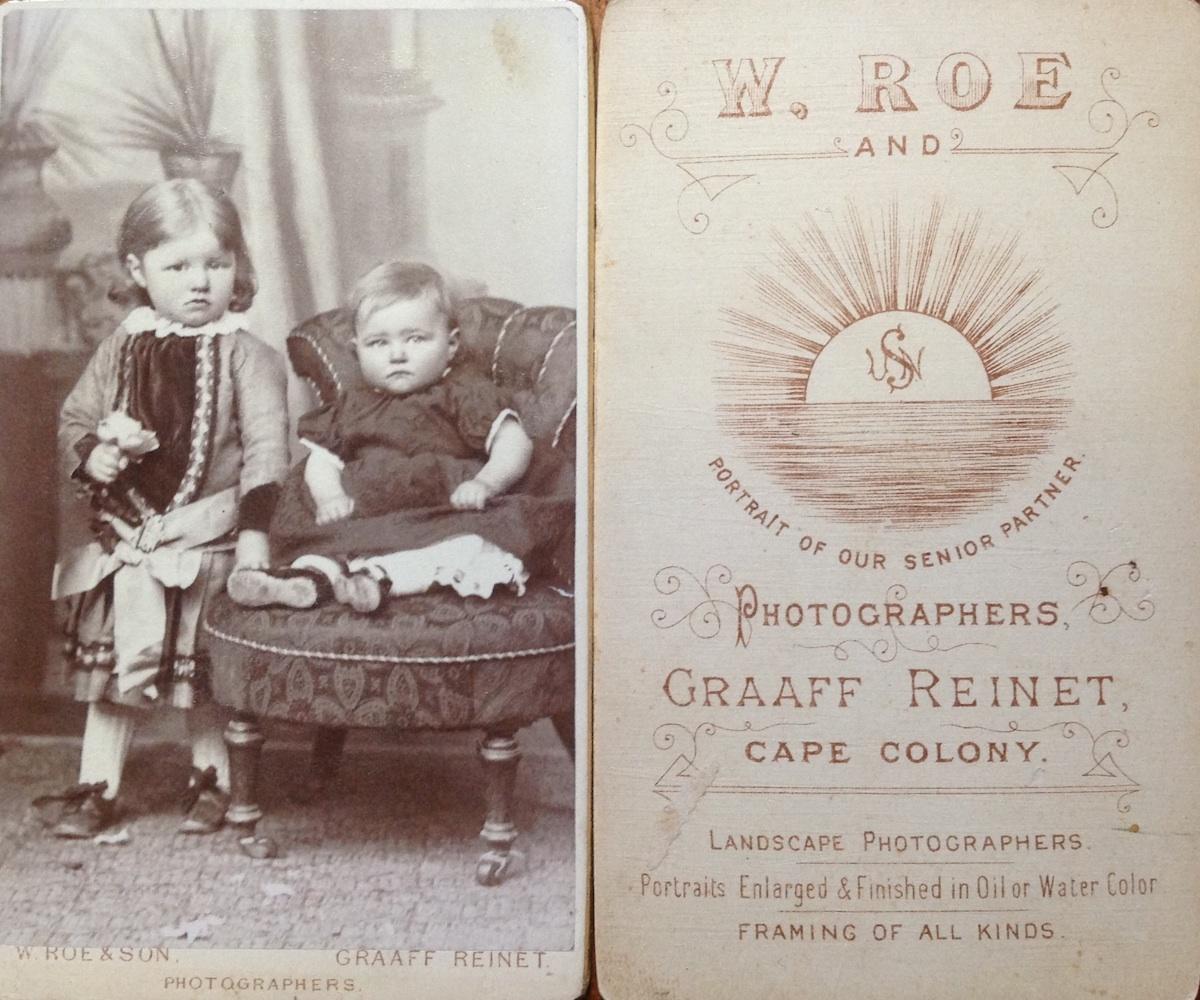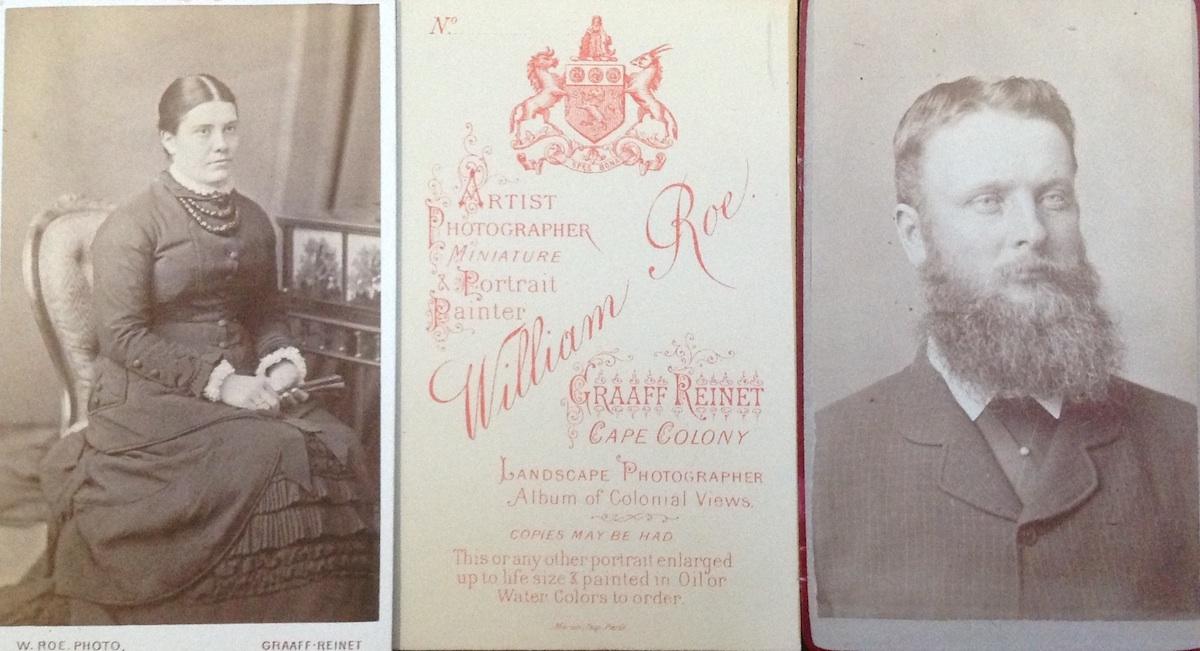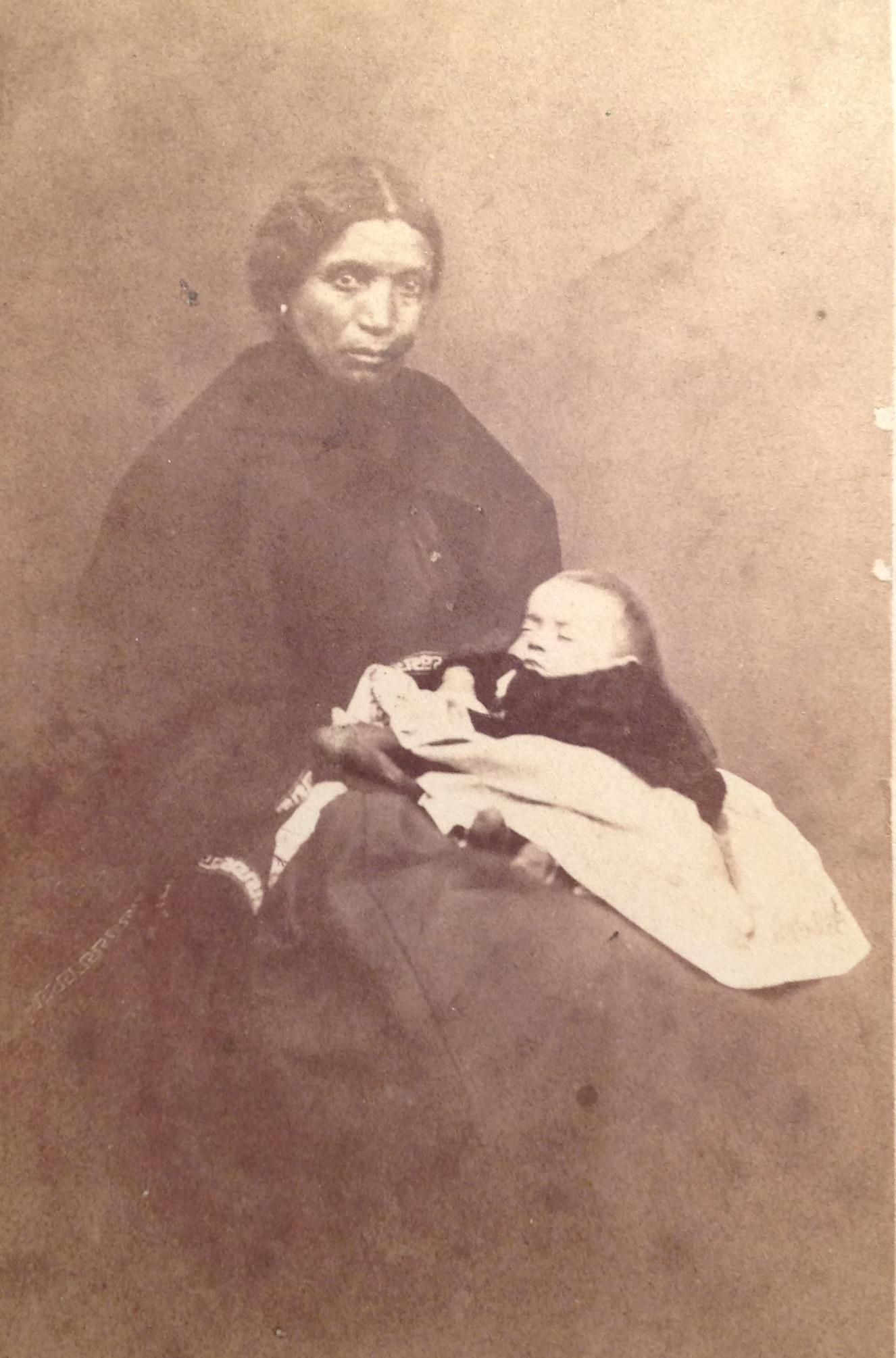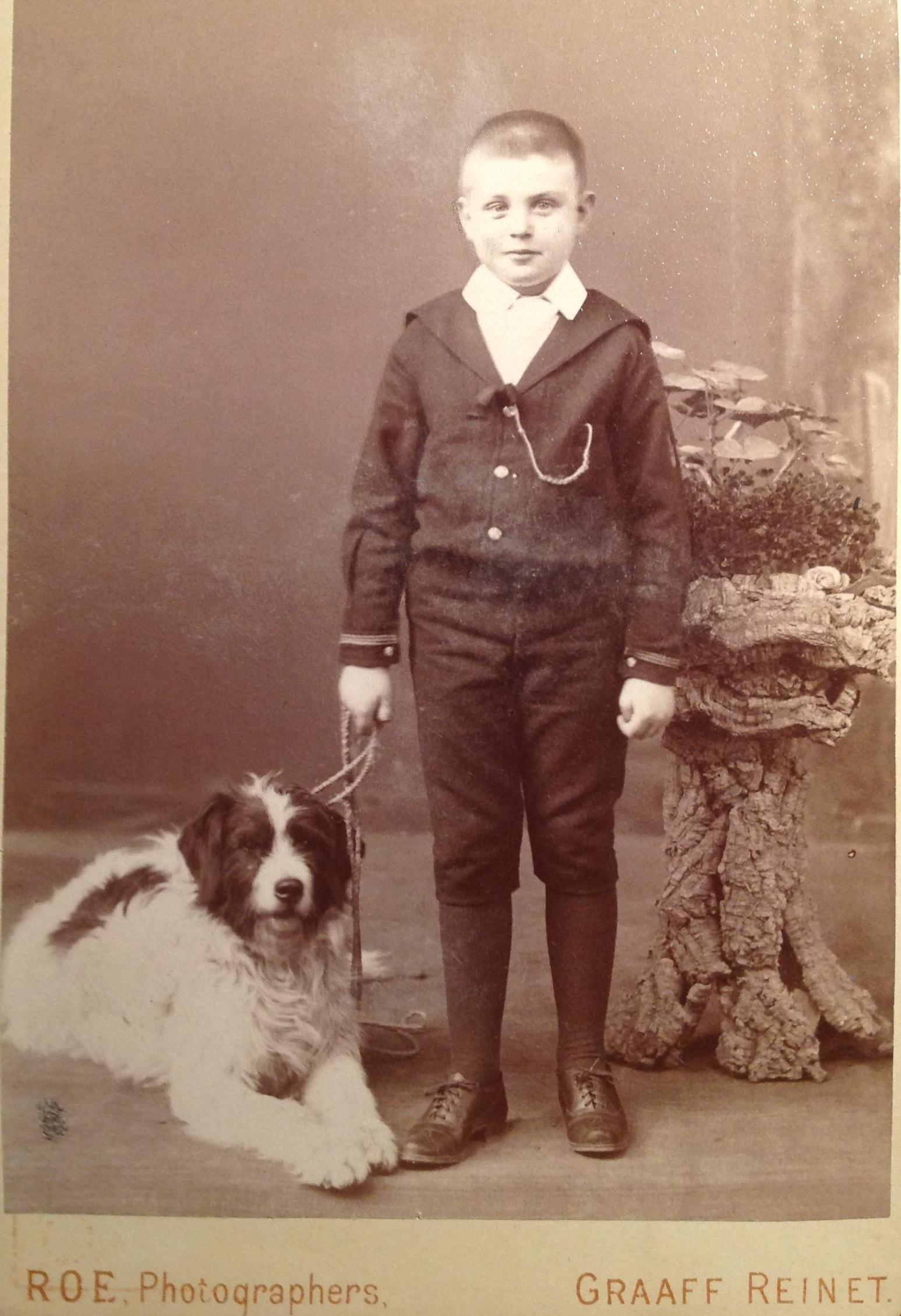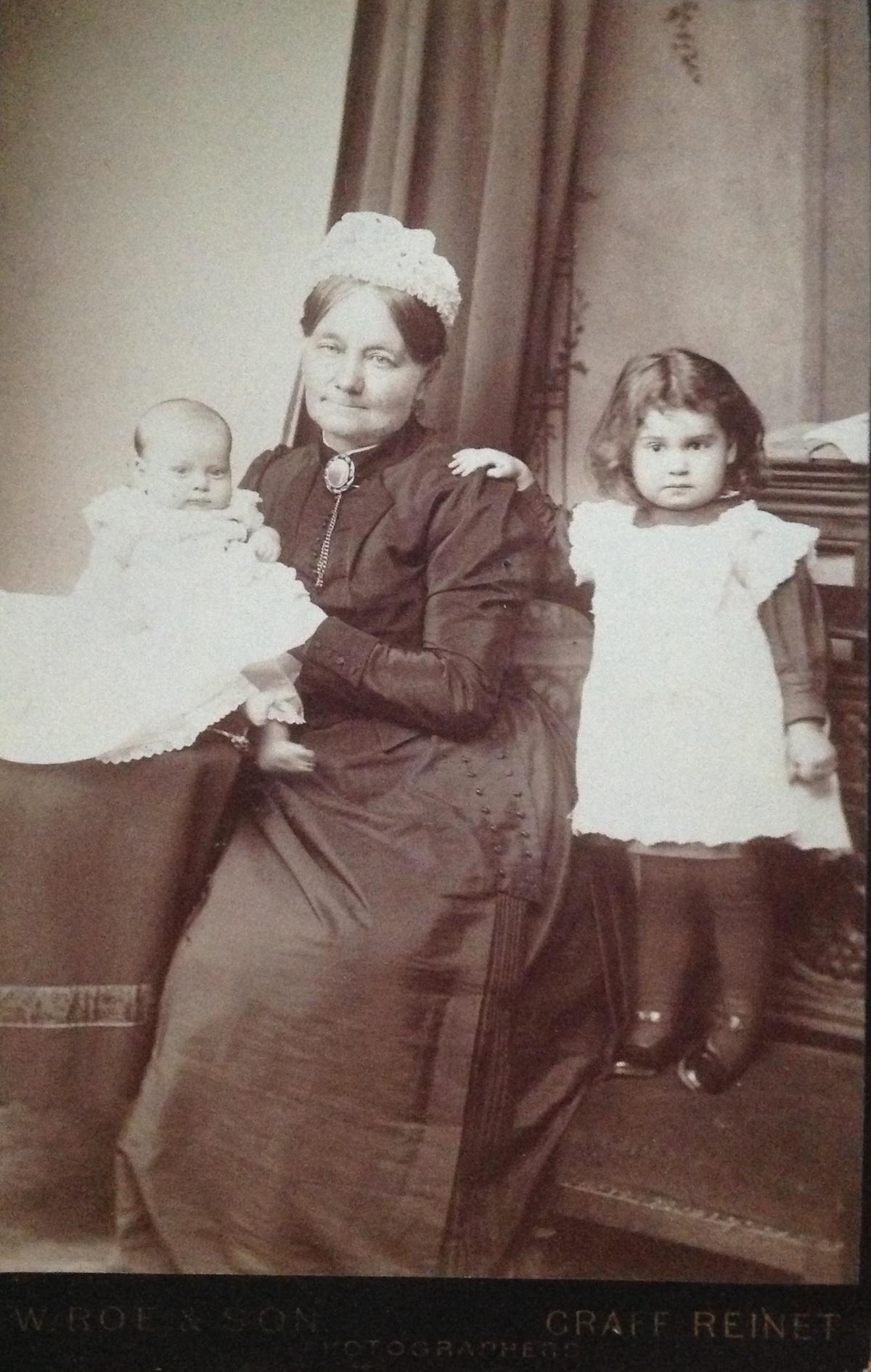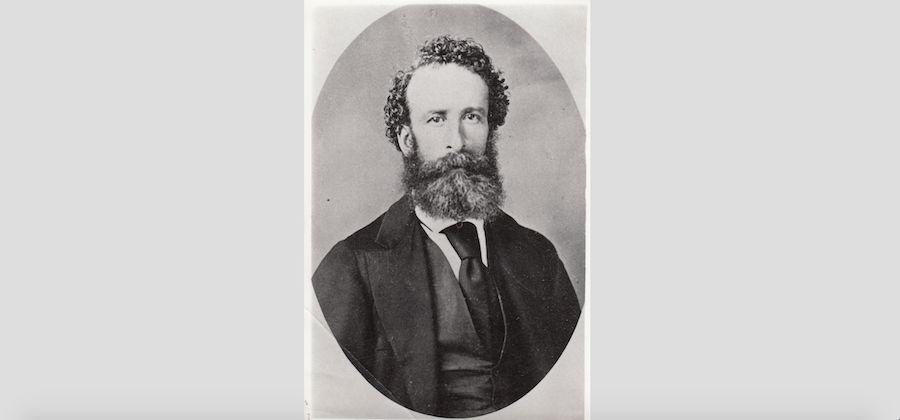
Disclaimer: Any views expressed by individuals and organisations are their own and do not in any way represent the views of The Heritage Portal. If you find any mistakes or historical inaccuracies, please contact the editor.
Established during 1786, Graaff-Reinet is the fourth oldest magistrate district in South Africa. At the time, this town was also the most important Eastern Cape based interior centre of trade in South Africa in that it was on the route of many travellers, mainly to and from the Algoa Bay harbour.
Photographic history of the Cape is older compared to that of the other provinces. Following the invention of photography during 1827, Jules Léger is recorded as the first photographer active in South Africa, initially based in Port Elizabeth during 1846 and later Grahamstown and Cape Town.
In a recent article on the Pretoria based photographer JC Munro (click here to read), it was pointed out that Munro practiced the art of photography for some 50 years whilst based in Pretoria. There is at least one other South African based photographer that exceeds this, namely the Graaff-Reinet based photographer William Roe.
Roe resided in Graaff-Reinet for almost 57 years (1859 to 1916). During this period, he documented the growth and development of Graaff-Reinet by photographing a broad spectrum of topics and in doing so captured the social context as well as the history of the town - extensively so.
Roe also captured immensely valuable landscape images. Few photographers were willing to commit to taking landscape photographs due to the heavy photographic equipment that had to be carted around. Roe’s landscape photographs have been described as his best work. This article however only includes images originating from Roe’s studio work.
Carte-de-Visite format photograph by William Roe of a seemingly well-to-do couple – Circa 1875
Cabinet card format photograph by William Roe – circa 1882. Females often stood whilst the men were seated. The reason for this was mainly for the female’s dress to be captured in full - in this instance fully justified
Roe settled in Graaff-Reinet at the age of 32, some 73 years after the establishment of the town and 32 years after the invention of photography. Photography was invented the same year he was born.
Many photographers were active in Graaff-Reinet in the period 1852 to 1916, but William Roe’s diligence and sense of duty resulted in us being left with an immensely rich and valuable visual history. As one of the most respected residents of Graaff-Reinet, his photographs certainly contributed to the historical heritage of this Eastern Cape town.
Roe was however not the first photographer active in Graaff-Reinet. The art of photography was already practised by the likes of James Hensley (1852 – Somerset street); Pieter de Kok (Dutch – 1857 – Pastorie street) & James Hall. Prior to 1859, short tours to Graaff-Reinet were also made by Arthur Green (Canadian) and James Bruton (South African). It has been suggested that Roe was the only photographer active in town from January 1861 to December 1864 (Bull & Denfield, 1970).
Carte-de-Viste format photograph by William Roe of an unknown couple – circa 1872. What makes this photograph unique is that the background has been manipulated. Roe would have removed the actual background on the original glass negative before producing the paper version. The reason for him doing so is unknown. It could be that he was not satisfied with the end result as the photograph may not have been taken in his own studio.
Other photographers active in Graaff-Reinet during the late 1800s and early 1900s include Augustus Brittain (Somerset Road); Edward Evans; Ernest Ewing (Caledon Street); CD Feneysey; Thomas Ffennel; D Fortuin (Middel Street); Hale and Cronin; CA Hensley (Market Square); F Hodgson; Allan Ivie; G Kemp (Somerset Road); WR Koertzen; Matthew Pearston; CHJ Schmidt (At van Blerk’s residence); Henry Selby and WB Sherwood.
Roe was born on 25 March 1827 in Northampton - England. His parents were shoemakers and Roe himself was an apprentice shoemaker whilst still in the UK.
Aged 20, Roe married Mary Ann Durham on 25 September 1847. Interested in natural sciences early in life, Roe studied chemistry. He also completed a photography course at the London School of Photography - probably during the mid-1850s.
Roe and family arrived in Algoa Bay (Port Elizabeth) on the ship Aurifera during August 1858 where he opened his first photographic studio during October 1858. He confirms in an advertisement that he is there only for a short stay. Whilst in Port Elizabeth he supplied both trade and amateurs with photographic chemicals and apparatus. During December 1858, he advertised in the local newspaper that he does not only produce photographs on glass and paper, but also on leather (the authors to date have not come across a photograph from that era produced on leather). This studio was based “on the Hill, behind M. Savage store, distinguished by the flag”. Shortly thereafter Roe briefly moved to Bloemfontein before settling in Graaff-Reinet during 1859.
At the time of arriving in South Africa, William and Mary Ann had three children (William Edward - born 25 April 1849, Mary Ellen - born August 1853 and Frederick Alfred - born August 1856). Their first-born, Alfred, passed away shortly after his birth in the UK during the late 1840s. Some two years after the family settled in Graaff-Reinet, Mary Ellen, when almost 8 years of age, died a tragic death on 9 April 1861, after taking in oxalic acid (a clothing stain remover). Other than a one-line archival record, no additional information could be obtained around the youngest child Frederick Alfred Roe. Some sources have this youngest child incorrectly recorded as Friede Afied, a girl.
Roe initially had his “portrait rooms” set up at his residence in Church Street, next to the library. He was also the chairperson of this library for many years. During 1866 Roe relocated his studio to Somerset Street.
Roe family (William senior & junior with Mary Ann in the window) photographed at their house/studio in Somerset Street – circa 1885 (Photograph provided by Ansie Malherbe)
Roe also travelled extensively, especially during the 1860s and 1870s. The furthest north he seemed to have travelled was to Pretoria.
Roe is known to have produced his first Carte-de-Visite format photograph as early as January 1863. He travelled to Burgersdorp, the oldest North Eastern town in the Cape, in 1864, where he offered this photographic format to the local population.
Carte-de-Visite format photograph of an unknown coloured female – circa 1866. This is the oldest known Carte-de-Visite format photograph in existence produced by Roe
It has been suggested that Roe was the first photographer who saw the photographic opportunities at the Kimberley diamond fields. He travelled to Kimberley in 1869, some 480 kilometres away, and took some of the first photographs of the diamond digging activities. These panoramic scenes were highly praised for precision and clarity. Etchings were made of some of these images and published in the Illustrated London News in March 1872. Roe returned to Kimberley in 1870 and 1872. It has been suggested that he remained there for two years following the 1872 trip. During this time, he more than likely focused on producing landscape photographs. No studio produced photographs have been identified originating from his activity whilst based in Kimberley. He may however have assisted other photographers with their studio work whilst based there.
Records also exist that Roe travelled to Pretoria to practice his photographic skills there between March and June 1874. Mary Ann joined him on his journey to Pretoria. Considering that a horse-cart could cover between 25 and 35 kilometre per day, this almost 900 kilometre journey would have been at least a 30-day journey one-way in those days – any stayovers excluded.
During his visit to Pretoria he also advertised that he had homeopathic medicines for sale. De Volkstem of 27 June 1874 refers to a photograph that he took of a group of freemasons whilst visiting Pretoria.
He also travelled to Aberdeen, some 52 km away, where he either had his own temporary studio, which had a much more informal appearance, or he rented the studio from the local photographer John F Scholtz who owned the Central Studio in Darling Street at the time.
Roe received various awards for his outstanding work in Paris in 1878 and at the Colonial and Indian exhibition held in London during 1886. In South Africa (Port Elizabeth), he was also awarded for his outstanding work in 1885.
Cabinet card format photograph by William Roe – circa 1882. Note the desk next to the female. This is often seen in other studio images by Roe.
Roe advertised that he was an artistic photographer and that he could produce miniature as well as portrait images. He also applied colour to photographs. Having a photograph hand-coloured became a status symbol. Although the colouring of portrait images was not all that common, due to cost, Roe produced some of the better quality coloured images in South Africa at the time. It is also recorded that Charles Essex, also an earlier photographer, assisted Roe towards the end of 1861 in the colouring of photographs.
Although the cost of producing a dozen Carte-de-Visite or Cabinet Cards was relatively inexpensive at the time, hand-coloured versions would have been more expensive. This explains why there are not all that many hand-coloured photographs of that era found today. To date the authors have not been able to determine what the typical cost would have been of having a photograph hand-coloured.
Cabinet card format photograph by William Roe of an unknown father and son – circa 1878. There has to be a painting of the adult male in existence, in that on the back of this card an inscription indicates that a painting measuring 12 x 15 needs to be made of “the old man”
An unusual hand-coloured Carte-de-Viste format photograph by Roe of the singer Miss Rhymer – Circa 1876. No information could be obtained about her. It is possible that she was a touring performer. The poor condition of the photograph indicates that the photograph was stored incorrectly.
In the Commercial review of the Cape Colony (1905) the following is stated about Roe: “The business is one of the oldest of its kind in South Africa, having been started by Mr William Roe, the senior proprietor, in 1860. This gentleman is one of the best known and most respected inhabitants of Graaff-Reinet, and we are under very great obligation to him for compiling the portion of our book dealing with the history of the town. We may also mention that our pictures of local scenery are from photographs taken by him. In his studio the utmost attention is devoted to the comfort of clients, and needless to say that there is an abundance of artistic accessories at hand as well as backgrounds suited to every requirement”.
William and Mary Ann’s second eldest son William Edward, born August 1849, assisted his father in his photographic business. During Roe senior’s absence in the early 1870s, Roe junior, then in his early 20s, probably managed the Graaff-Reinet studio.
At one point the business was known as Roe & Son or simply Roe Photographers. Interestingly, the artwork produced on the back of their Carte-de-visite and Cabinet cards also included a rising sun. This is not only a clever play on words around “son” and “sun” but the addition of the curious wording underneath the sun “portrait of our senior partner” also acknowledges that sunlight played a crucial role in the development of the photograph at the time.
Carte-de-Visite format photographs by William Roe and Son of unidentified children – circa 1880. Image on the right is the print that was produced on the back of some of these cards.
The fact that Roe photographed a broad spectrum of subjects indicates that he comprehended the historical social context in the history of a town and its community and that he attempted to capture this accordingly. Considering that Graaff-Reinet only had some 5000 residents in 1880, Roe captured not only the more affluent white population but also the less privileged black/coloured population. He also photographed both Boer and Brit in his studio during the Anglo-Boer War.
On the back of some of his Carte-de-Visite and Cabinet Card format photographs, Roe advertised that they also produced “albums of colonial views”. Like many other well established photographers, Roe also commercially published at least one known album during the 1880s simply titled “Photographic Views”. The photographs contained in this album are scenic views of Graaff-Reinet’s surroundings. Further research will need to be conducted to confirm whether any other such albums have been produced by Roe and his son.
Carte-de-Visite format photographs by William Roe of unidentified adults – Circa 1878. The desk on the female’s right can be seen in many other images as well. The image in the middle confirms that Roe advertised his skill as artist, photographer & miniature portrait painter. He also advertised his focus on landscape photography. The “album of colonial views” referred to, confirms that he also produced albums commercially
True to his nature, Roe also took an active interest in the development of the town (agriculture, sanitation and water supply). He published a variety of articles along these lines. See for example: Agricultural Journal of the Cape of Good Hope (1897) Vols 10 (1) & 10 (3).
Roe also re-photographed existing photographs of leaders and royalty, such as President Kruger and Queen Victoria and sold these in bulk. These images were in demand by citizens for inclusion in their Victorian photo albums. He did not shy away from taking post mortem photographs either (see image below).
A postmortem photograph in a Carte de Visite format – Circa 1876. This image confirms that Roe did not shy away from taking images of the dead – a popular practice in those years. What is of further significant of this image is not only the composition, but also that a coloured female is holding the child. It is assumed that she was a servant to a wealthy family based in town.
The significance in some of the images produced by Roe is confirmed in that a photograph produced by him of Reinet House (based in Graaff-Reinet), was used during the 1950s restoration process and again following the devastating fire in the 1980s.
Considering that some photographs from around 1915 are occasionally seen, especially studio photographs, it can be assumed that Roe was active as a photographer until shortly before his death.
Constant financial challenges in Roe’s life confirms that the profession of photographer was a tough one. On 8 November 1864 William surrendered his estate due to insolvency brought on by “falling off in business caused by the late depression in this town and district”. His photographic equipment was then valued at £7.10.
Several other instances of financial challenges also show up in archival records. During 1907, Roe for example, borrows £200 from a John Luscombe repayable over an 8-year term. Roe senior also did not own the properties at Somerset Street (used as the studio) and Parliament Street (residence). Both these properties were registered in the name of Roe junior at the time of Roe junior’s death. An assessor thereafter recommended that a fair rental for Roe senior to pay would be £72 per annum for the two properties.
Roe senior passed away at his residence at Parliament Street on 12 April 1916 – aged 89. Roe’s death notice indicates that all his children were deceased at the time of his death. Mary Ann, who was partly disabled during the latter part of her life, passed away during 1921 aged 92.
Cabinet format photograph by Roe photographers (father & son) of unknown boy and his pet dog – Circa 1885. Note the smirk on the boy’s face possibly signifying proud ownership of his pet.
Much of Roe’s photographic equipment went up for public auction shortly after his death. An unknown Graaff-Reinet resident also managed to rescue some photographic plates from the back yard of Roe’s house after his death. These plates were discarded by the new owners of the Roe house. These images, plus others, are housed at the Graaff-Reinet museum today.
The unmarried Roe junior passed away in Graaff-Reinet at his Church Street house on 12 September 1913 (aged almost 65), two and a half years before his father. He lays buried with his father in Graaff-Reinet. Ironically the gravestone indicates that he passed away in 1914. The archival record of 1913 is accepted as the correct version.
No doubt, Roe with his artistic sense combined with his overall diligence and sense of duty made a huge contribution to South African photographic heritage. Malherbe (2014) aptly states that: "The Roe photographs can be viewed as the bridge that anchors the current with the past".
This article focused on Roe senior more than Roe junior. It cannot be determined with certainty as to what the photographic workload distribution was between father and son. Given that Roe senior received most of the accolades around his Kimberley and landscape photography plus that fact that most of the Carte-de-Visite and Cabinet cards photographic formats in circulation only refer to “Roe” and not “Roe Photographers” or “Roe and Son”, suggests that Roe senior produced most of the photographic images in circulation. It is unlikely that Roe junior would have produced images independently under the “Roe” banner.
Cabinet format photograph by Roe photographers (father & son) of unknown grandmother and her grandchildren. Note the incorrect spelling of Graaff-Reinet. Card stock ordered in bulk from abroad were often produced with spelling errors of this nature.
Main image: Photograph of William Roe at around 38 years of age (Photograph provided by Ansie Malherbe).
About the author: Carol is passionate about South African Photographica – anything and everything to do with the history of photography. He not only collects anything relating to photography, but also extensively conducts research in this field. He has published a variety of articles on this topic and assisted a publisher and fellow researchers in the field. Of particular interest to Carol are historical South African photographs. He is conducting research on South African based photographers from before 1910. He is also in the process of cataloguing Boer War stereo images produced by a variety of publishers. Carol has one of the largest private photographic collections in South Africa.
Special acknowledgement:
- This article is largely based on Dr. Ansie Malherbe’s research conducted on William Roe.
- Dr. Gustav Hendrich for his assistance in extracting the relevant archival documents at the Cape Archives as it relates to the Graaff-Reinet based Roe family.
Sources:
- Bull, M. & Denfield, J. (1970). Secure the Shadow. Terence McNally. Cape Town
- Bensusan, A.D. (1966). Silver Images. Howard Timmins. Cape Town
- Cape Archives. Various archival documents extracted during 2018 as it relates to the Graaff-Reinet based Roe family.
- Hardijzer, C.H. Photographic research collection. All images above, to the exclusion of the two images provided by Ansie Malherbe, originate from this private research collection.
- Malherbe, J.F. (2014). Die rol van neëntiende-eeuse fotografie in eietydse bewaring: William Roe en Graaff-Reinet. University of Stellenbosch.
- Plug, C. (2014). Roe, Mr William. S2A3 Biographical Database of Southern African Science.
- Schoeman, K. (1996). The face of the country – A South African family album (1860 – 1910). Human & Rousseau. Cape Town.
- www.antiquarianauctions.com (Contains an example of one of the books published by Roe & Son).
Comments will load below. If for any reason none appear click here for some troubleshooting tips. If you would like to post a comment and need instructions click here.

